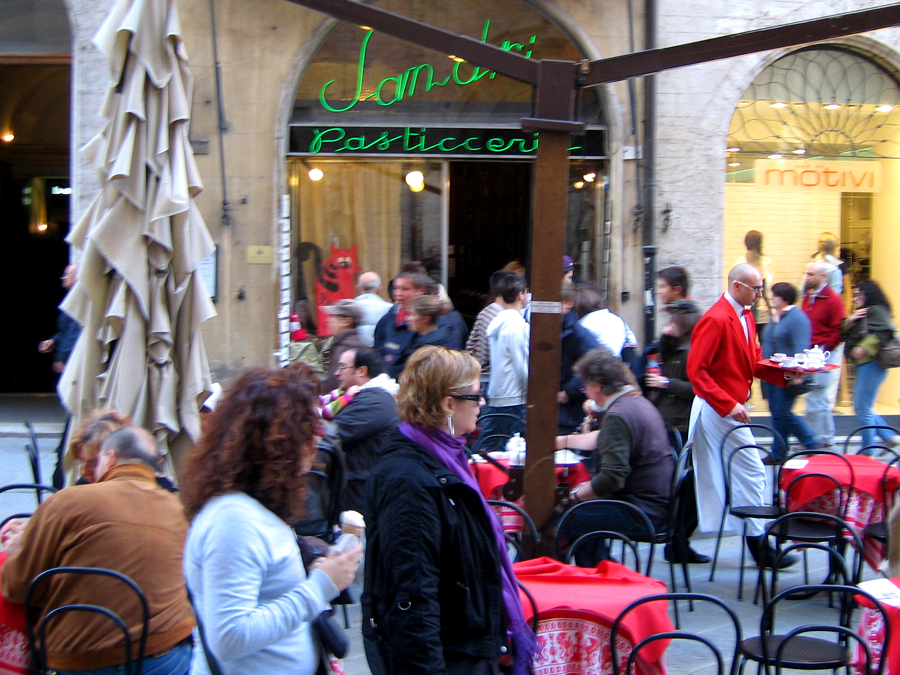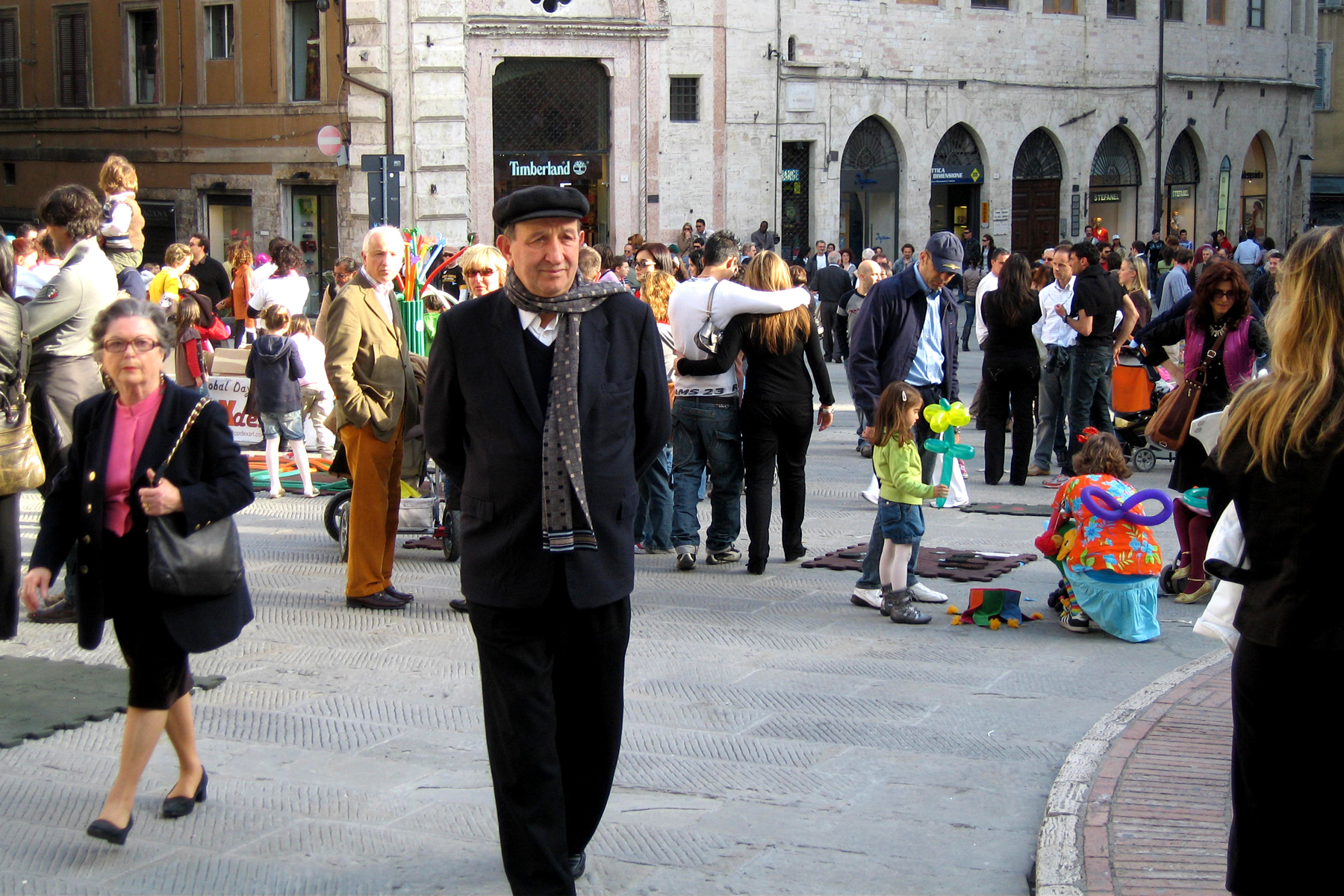Today is my last day in Perugia. I’m at a loss as to why the thought of leaving makes me feel so melancholy. I tried to talk Maura into spending the day with me but she’d already booked her services to some group from Spain. So I have just slowly tried to enjoy the day, beginning with my breakfast at the hotel, brought to me by Luisa who, since the first morning, has brought out a large cappuccino from the kitchen and placed it in front of me without me ever having to ask. I hadn’t realized I’d grown so fond of Luisa. I will miss her.
And I will miss Valentina at Caffé di Perugia. No matter how busy she was, she’d always bring me little plates of sausages and potato chips with my proseco in the evening, delivering them with a smile and an enthusiastic “Buona sera!”
Then there is Mario Ragni, the owner of a little sandwich shop on Piazza Italia called La Bottega del Gusto. Mario, once a well-known chef in the region, is not a well man, yet whenever I stopped in he’d rise up from his chair, as difficult as it was for him, and embrace me like we were brothers. Mario’s bottega is always filled with Perugian power brokers. As a judge whispered to me the other day while we both waited for our sandwiches, “Mario is a maestro of food.”
And he is. I wish him well.
But most of all, of course, I will miss Maura. She’s been much more than a guide to me. She has been my Virgil. There is so much about Perugia and the rest of Umbria that I would have missed without her. As she liked to say, “We can see only what we know.” I now see the great beauty of Perugia—a vision that eluded me when I first arrived—because Maura taught me so much.
Before saying goodbye, we had a coffee at our favorite pasticceria, Sandri. I brought her a little box of Perugina chocolates as a thank you gift. She opened a foil-wrapped Baci and read out loud the saying on the slip of paper inside:
“The heart has its reasons which reason does not know.”—Pascal
And then we said goodbye.
Now I am back in my hotel room, writing this on my balcony. It is early evening. College-aged students are strolling arm-in-arm down the Corso Vannucci. A young mom is buying gelato for her children in the shop across the way. From somewhere down the cobblestone street floats the sound of a saxophone playing jazz. The old woman I’d noticed my first morning here is back on her balcony with a watering can; her wisteria is in full bloom. Dozens of swallows rise and dive in the twilight, happily chasing their dinner. The seasons are changing; summer is coming.
I text Hardy a message: U win. Perugia truly is the sexiest small city in the world.








Recent Comments